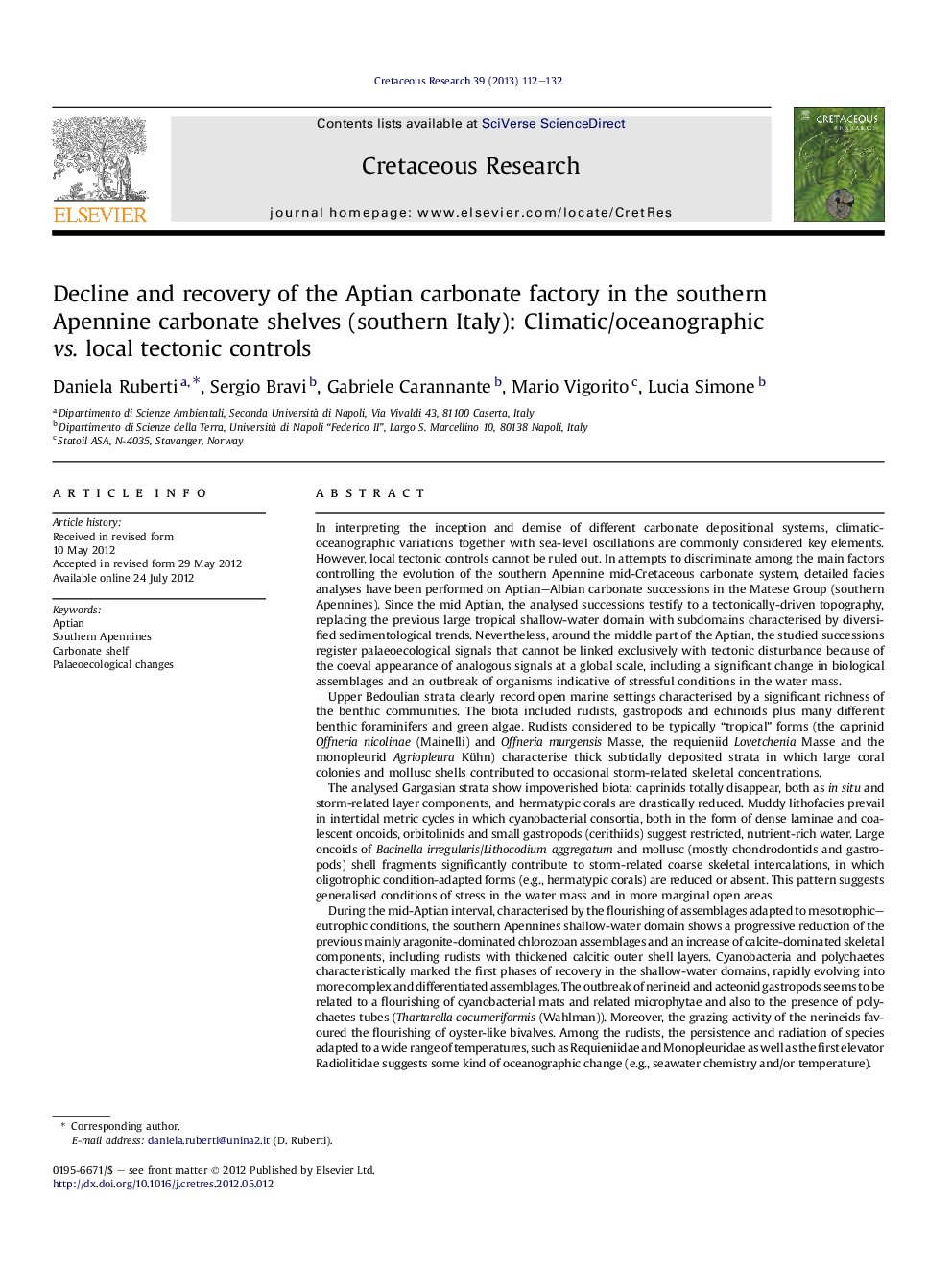| کد مقاله | کد نشریه | سال انتشار | مقاله انگلیسی | نسخه تمام متن |
|---|---|---|---|---|
| 4747217 | 1642083 | 2013 | 21 صفحه PDF | دانلود رایگان |
In interpreting the inception and demise of different carbonate depositional systems, climatic-oceanographic variations together with sea-level oscillations are commonly considered key elements. However, local tectonic controls cannot be ruled out. In attempts to discriminate among the main factors controlling the evolution of the southern Apennine mid-Cretaceous carbonate system, detailed facies analyses have been performed on Aptian–Albian carbonate successions in the Matese Group (southern Apennines). Since the mid Aptian, the analysed successions testify to a tectonically-driven topography, replacing the previous large tropical shallow-water domain with subdomains characterised by diversified sedimentological trends. Nevertheless, around the middle part of the Aptian, the studied successions register palaeoecological signals that cannot be linked exclusively with tectonic disturbance because of the coeval appearance of analogous signals at a global scale, including a significant change in biological assemblages and an outbreak of organisms indicative of stressful conditions in the water mass.Upper Bedoulian strata clearly record open marine settings characterised by a significant richness of the benthic communities. The biota included rudists, gastropods and echinoids plus many different benthic foraminifers and green algae. Rudists considered to be typically “tropical” forms (the caprinid Offneria nicolinae (Mainelli) and Offneria murgensis Masse, the requieniid Lovetchenia Masse and the monopleurid Agriopleura Kühn) characterise thick subtidally deposited strata in which large coral colonies and mollusc shells contributed to occasional storm-related skeletal concentrations.The analysed Gargasian strata show impoverished biota: caprinids totally disappear, both as in situ and storm-related layer components, and hermatypic corals are drastically reduced. Muddy lithofacies prevail in intertidal metric cycles in which cyanobacterial consortia, both in the form of dense laminae and coalescent oncoids, orbitolinids and small gastropods (cerithiids) suggest restricted, nutrient-rich water. Large oncoids of Bacinella irregularis/Lithocodium aggregatum and mollusc (mostly chondrodontids and gastropods) shell fragments significantly contribute to storm-related coarse skeletal intercalations, in which oligotrophic condition-adapted forms (e.g., hermatypic corals) are reduced or absent. This pattern suggests generalised conditions of stress in the water mass and in more marginal open areas.During the mid-Aptian interval, characterised by the flourishing of assemblages adapted to mesotrophic–eutrophic conditions, the southern Apennines shallow-water domain shows a progressive reduction of the previous mainly aragonite-dominated chlorozoan assemblages and an increase of calcite-dominated skeletal components, including rudists with thickened calcitic outer shell layers. Cyanobacteria and polychaetes characteristically marked the first phases of recovery in the shallow-water domains, rapidly evolving into more complex and differentiated assemblages. The outbreak of nerineid and acteonid gastropods seems to be related to a flourishing of cyanobacterial mats and related microphytae and also to the presence of polychaetes tubes (Thartarella cocumeriformis (Wahlman)). Moreover, the grazing activity of the nerineids favoured the flourishing of oyster-like bivalves. Among the rudists, the persistence and radiation of species adapted to a wide range of temperatures, such as Requieniidae and Monopleuridae as well as the first elevator Radiolitidae suggests some kind of oceanographic change (e.g., seawater chemistry and/or temperature).On the basis of the features described above, we propose the existence of a complex environmental scenario in which cooler conditions, presumably coupled with meso/eutrophic and locally oligophotic conditions, related to climatic/oceanographic global changes, cooperated in modifying the carbonate factory characterisation in a tectonically controlled setting.
► We analysed Aptian-Albian shallow-water carbonate successions in southern Apennines.
► We compared two different settings which underwent different stratigraphic evolution.
► We analysed the palaeoecological response to oceanographic changes of benthic macroinvertebrate.
► We discriminated between local (tectonic) and global (climatic-oceanographic) causes.
Journal: Cretaceous Research - Volume 39, February 2013, Pages 112–132
